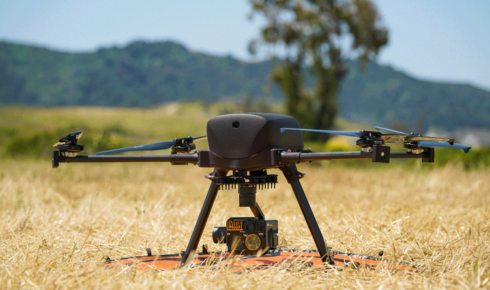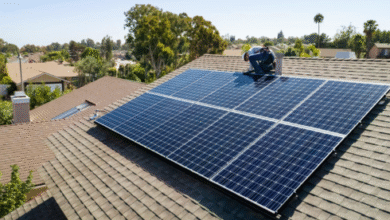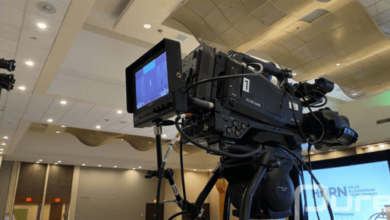Drone Swarms for Disaster Relief: Coordinated UAVs in Emergency Response, Presented by Sonoran Desert Institute

When disasters strike, whether earthquakes, floods, wildfires or hurricanes, the need for rapid response and efficient resource allocation becomes a matter of life and death. Traditional response methods often face obstacles such as damaged infrastructure, hazardous environments or limited personnel. Sonoran Desert Institute (SDI), accredited by the Distance Education Accrediting Commission (DEAC), is at the forefront of preparing students to meet these evolving challenges. Through its Associate of Science in Uncrewed Technology (ASUT) and Certificate in Uncrewed Technology Aerial Systems programs, it offers comprehensive training in uncrewed aircraft systems (UAS), encompassing drone design, flight testing, sensor integration and remote sensing. These programs equip graduates with the technical skills necessary to adapt to emerging technologies in the field, including the integration of automation, analytics and mobility solutions aimed at enhancing the effectiveness of security operations.
Thanks to advancements in swarm AI, drone teams can now operate collaboratively and autonomously, completing complex missions faster and more effectively than ever before. The result is a scalable, adaptable and highly efficient support system that is redefining how we approach disaster relief.
Coordinated UAVs in Emergency Response
In the immediate aftermath of a disaster, first responders often have limited information about the extent of the damage, safe access routes or the location of survivors. Drone swarms offer an unprecedented advantage by quickly deploying over affected areas, mapping the terrain and gathering real-time data.
Unlike single-drone missions, swarms operate as a unified system. Each drone is assigned a specific section or task. Some focus on capturing aerial imagery, others perform thermal scans to locate survivors and others assess infrastructure like bridges or power lines. These units communicate wirelessly, adjusting flight patterns and objectives based on conditions in real-time.
This distributed approach accelerates situational awareness. Within minutes, relief agencies receive a comprehensive overview of the disaster zone, including 3D maps, heat signatures and environmental readings. These insights inform critical decisions such as where to dispatch rescue crews, how to prioritize supply drops or which areas pose the highest safety risks.
Delivering Supplies and Life-Saving Aid
One of the most practical applications of drone swarms in disaster relief is supply delivery. In many disasters, roads become impassable and traditional delivery vehicles are unable to reach remote or isolated victims. Drone swarms overcome this challenge by delivering small payloads of food, water, medical supplies and communication equipment directly to those in need.
Using GPS and real-time tracking, drones can reach precise coordinates with minimal delay. In coordinated swarms, these UAVs can deliver aid to multiple recipients simultaneously, greatly expanding the reach and speed of the response.
Payload-bearing drones in a swarm may operate in tandem with mapping drones, ensuring that aid is delivered only to confirmed locations with survivors or urgent needs. Some advanced swarms are even capable of returning to base for automatic reloading and redeployment, enabling continuous delivery throughout the day.
These capabilities are particularly valuable in areas where time is critical, such as delivering insulin to people with diabetes, oxygen to those with respiratory issues or emergency shelter to exposed populations.
Advancements in Swarm AI
Swarm AI technology lies at the heart of successful drone swarm operations. Unlike traditional UAV programming, where each drone follows a predetermined path, swarm AI enables UAVs to work together using shared intelligence. It allows them to dynamically adjust their routes, avoid collisions and complete complex, interdependent tasks.
Swarm AI is modeled after natural behaviors seen in birds and insects. Each drone is programmed with algorithms that allow it to sense and respond to the position of neighboring drones, environmental changes and mission objectives. When one drone encounters an obstacle or changes course, the others adapt instantly, ensuring mission continuity without centralized control.
This decentralized structure increases redundancy and resilience. If one drone fails or is grounded due to damage or battery loss, the others can adjust seamlessly to cover its task. Some systems also use machine learning to refine their performance over time, learning from each mission to improve accuracy and efficiency.
Developments in edge computing now allow drones to process data onboard instead of relying on external servers, further enhancing autonomy and reducing latency during critical missions.
Real-World Deployments and Case Studies
Drone swarms have already proven their value in real-world emergencies. During the 2023 wildfires in Greece, drone swarms were deployed to map fire boundaries and monitor hotspots. The information helped firefighters identify flare-ups before they spread and guided evacuation plans for at-risk communities.
In Haiti, following a devastating earthquake, drone swarms supported humanitarian organizations by delivering water purification tablets and medical kits to remote villages. The UAVs also mapped landslide-prone areas, alerting ground teams to secondary threats that could endanger rescue operations.
In the United States, the Federal Emergency Management Agency (FEMA) has incorporated swarm drone drills into its response planning. These exercises simulate mass flooding events, during which drone teams are tasked with scanning submerged areas, searching for stranded individuals and delivering life vests or emergency radios.
The key takeaway from these cases is that drone swarms are not merely theoretical; they are active, evolving tools with measurable life-saving results. Their speed, flexibility and cost-effectiveness make them essential assets in 21st-century disaster management.
The Future of Swarm-Based Disaster Relief
As technology continues to advance, drone swarms are expected to play an even larger role in disaster preparedness and response. Future developments may include:
- Autonomous drone hubs that recharge, restock and relaunch swarms with minimal human oversight.
- Integrated communication systems that connect drone data with emergency dispatch centers and public alert systems.
- AI-based predictive models analyze incoming data from swarms to forecast secondary disasters, such as dam failures or aftershocks.
Some researchers are exploring modular drone swarms, in which UAVs attach mid-flight to form temporary structures such as light towers or signal relays. This level of adaptability could further expand the use cases for drone swarms in natural and artificial disasters.
International aid organizations are also considering standardizing swarm protocols, which would make it easier to deploy multi-vendor drone fleets in cross-border relief efforts.
Sonoran Desert Institute highlights the essential role of drones and automation in enhancing emergency response and public safety. Through hands-on training and technical coursework in UAS, students gain practical skills in drone design, flight testing and sensor integration. This foundational knowledge equips graduates to understand and potentially leverage emergingtechnologies in critical infrastructure support and humanitarian missions. By mastering these advanced capabilities, students are prepared to become valuable contributors to innovative and efficient disaster response efforts.
As the world faces more frequent and intense disasters, the demand for efficient, responsive and scalable solutions can only grow. Drone swarms offer a glimpse into the future of emergency management, a future where speed meets strategy and where autonomous coordination delivers hope in moments of crisis.




